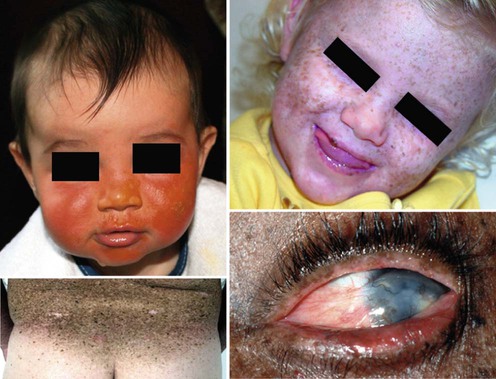DNA testing for mutations in several XP genes is available (www.genetests.org). Since XP is a clinical diagnosis and mutation testing is not currently available for all the known XP genes, failure to identify a mutation does not rule out the diagnosis of XP. The cells of XP patients in culture are extremely sensitive to the killing effects of UV but there are currently no CLIA certified laboratories in the US performing this type of XP test. Clothing should cover as much skin surface as possible and should include long pants, long sleeved shirts, socks and closed toe shoes, hats which cover the ears or UV blocking face shields and hoods, and UV blocking sunglasses with side shields. For daytime outdoor exposure gloves or mittens can be worn to protect hands. Clothing material should be tightly woven (e.g., denim) or double layered. A simple test of effective UV protection by clothing is to hold the material up to a bright light. Material that permits visible light to pass will not block UV. Commercially available clothing made from sun blocking material is available but may be expensive. One alternative is a laundry additive called SunGuard (https://sunguardsunprotection.com/index.php), which is advertised to increase the ability of clothing to block UV. They recommend regular washing of outer clothing (pants, shirts, jackets, socks, gloves, and hats) to increase UV protection. The cornea and sclera are also at risk, and XP patients should wear UV blocking sunglasses in areas of potential exposure. The glasses should ‘wrap around’ the eyes to protect the sides of the eyes and large enough to fully protect both lids. Rigorous use of these measures should be initiated as soon as the diagnosis of XP is suspected, and need to be the mainstay of lifelong protection. Medical alert bracelets (http://www.medicalert.org/home/Homegradient.aspx) and carrying an information card about the condition in a purse or wallet can be helpful in emergencies when affected individuals may not be able to communicate their UV sensitivity. Obtaining health insurance and workplace accommodations may require considerable effort. The patients may be eligible for Social Security Disability Insurance or other medical assistance. XP support groups help patients connect with other affected families and minimize social isolation; these groups also sponsor UV safe family activities. (The XP Family Support Group, http://www.xpfamilysupport.org; The Xeroderma Pigmentosum Support Group UK, http://xpsupportgroup.org.uk; The Xeroderma Pigmentosum Society, http://www.xps.org). There are also support groups in Germany, Japan, and the Middle East. In situations with psychosocial pathologies (e.g., substance abuse or domestic violence), or if the family is having extreme difficulty coping with the diagnosis, referral to social services or a therapist may be advisable.
Xeroderma pigmentosum

Management strategy
Diagnosis
Environmental management
Social and psychological impact and effect on the family
![]()
Stay updated, free articles. Join our Telegram channel

Full access? Get Clinical Tree


Plastic Surgery Key
Fastest Plastic Surgery & Dermatology Insight Engine
